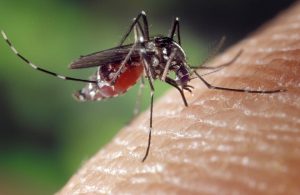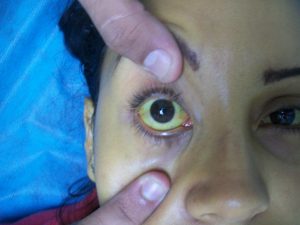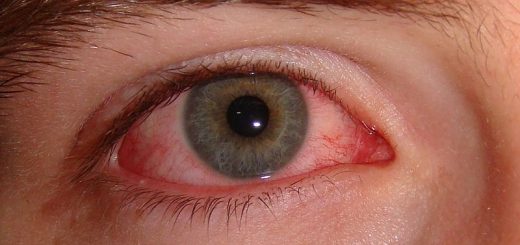What Diseases Should You Be Vaccinated For?
As of August 2018, there are vaccines for 26 diseases and ailments. Vaccines are a type of preventative medicine. While this website does have home remedies for several of the diseases listed in this article, we suggest that everyone who has not been vaccinated do so. After all, it is much better to prevent an ailment than to need to cure one with home remedies.
While getting a vaccine does sometimes come with side effects, they are usually mild. Some common side effects of a vaccine, include injection site redness or bruising, itching, and swelling. It is only a rumor that vaccines cause autism.
Diseases Preventable with Vaccines
In this article, we will discuss the various diseases that are preventable by the use of vaccines. Hopefully, this article will convince more people to get vaccinated or to vaccinate their children. This can help to stop and prevent the spread of disease both within a small family and within a large community.
-
Cholera
Cholera is a type of water-borne disease that is most common in tropical areas. This disease is common in people who live in the southern hemisphere or in people who vacation in tropical destination spots. Whether they live in or visit a tropical area, people can get cholera by drinking contaminated water. This disease can also be spread by eating food that is grown in contaminated soil. However, it is not contagious; it does not spread from person to person.
Some of the symptoms of cholera include dehydrated, fever, diarrhea. While the symptoms of cholera can be treated with home remedies, the disease itself cannot be prevented or cured with home remedies.

To avoid getting cholera, drink bottled water when in tropical areas
-
Dengue
Dengue, also known as Dengue fever, is a disease that is spread by mosquitoes. Like cholera, this disease is most common in tropical areas. Since it is difficult to avoid being bitten by a mosquito, it is best to be vaccinated if you live in a tropical area or if you are planning to visit one.
This is another disease in which home remedies can treat some of the symptoms, but that home remedies cannot prevent or cure. Some of the most common symptoms of dengue include a fever, as the name implies, and joint pain.
-
Diphtheria
Diphtheria is another disease that is caused by bacteria. This bacteria can be spread through the air when someone coughs, sneezes, or talks. Once a person has diphtheria, they have about a 5-10% chance of dying.
Some of the most common symptoms of diphtheria include swollen glands, trouble breathing, sore throat, difficulty swallowing, and ultimately, death.
-
Hepatitis A
Hepatitis A is not a sexually transmitted disease, unlike some of the other types of hepatitis. Instead, thi form of hepatitis is spread through contact of feces (or food or water that has come in contact with feces) of someone who already has hepatitis A. Unlike the other types of hepatitis, this type goes away over time.
All types of hepatitis, including hepatitis A, primarily affect the liver. This can make it difficult for your liver to filter out toxins, produce bile, rid itself of waste products, and more. If left untreated, hepatitis may lead to liver cancer and related complications.
-
Hepatitis B
There are several types of hepatitis, many of which caused by different things. Hepatitis B can be spread through blood, saliva, mucus, and other bodily fluids. It is usually considered a type of sexually transmitted disease, but it can also be spread by reusing needles from someone who has hepatitis B.
Hepatitis B affects the liver; it does not cause HIV or AIDS. While it is less deadly than HIV, it is more contagious than HIV. Hepatitis B and lead to a variety of liver problems, including cancer. It does not directly lead to death, but the problems it causes can lead to death.
-
Hepatitis E
Hepatitis E is spread through the water, usually as a result of water polluted by feces. This type of hepatitis can leave patients with life-long complications. Unlike hepatitis B, it is not sexually transmitted.
Like the other forms of hepatitis, this form also damages the liver. In the same vein, it can eventually lead to liver cancer and other serious complications, which is why it is so important to get vaccinated. Those most at risk for hepatitis E are people to live in underdeveloped countries in Asia, South America, and Africa.

Avoid drinking alcohol if you have any form of hepatitis, as it can damage the liver further
-
Haemophilus influenzae type b (Hib)
This is another type of bacteria that can cause both pneumonia and meningitis if left untreated. Infants and young children are the ones most likely to get (and die from) this disease if left unvaccinated. People with weak immune systems can also sometimes be at risk if they are unvaccinated.
Some of the primary symptoms of this disease include coughing, sneezing, joint pain, meningitis, and pneumonia. Both meningitis and pneumonia can lead to death if left untreated.
-
Human Papillomavirus (HPV)
The human papillomavirus, also known as HPV, is a type of virus that can cause cervical cancer. This disease causes the most damage to women, but men can also be affected. It is recommended that girls start getting the vaccine, which takes three doses, soon after they reach puberty. The disease is spread through anal, vaginal, or oral sex with an infected person.
Some people who have HPV, mainly men, may not see symptoms of the disease at first. However, the disease can manifest itself by creating genital warts. In women, the disease can also cause cervical cancer, which can lead to death.
-
Influenza
Influenza, also known as the flu, is a common disease. There are constantly new strains of the flu forming, which is why it is so important to get a flu vaccination every year, around flu season. The flu is highly contagious. It spreads when one person who has the flu sneezes or coughs, or even talks to another person who is unvaccinated.
Many symptoms of the flu are much like the symptoms of a common cold. Sometimes, even when a person gets vaccinated, they can still catch the flu. Some of the main symptoms include coughing, sneezing, runny or stuffy nose, sore throat, nausea, abdominal pain, vomiting, lightheadedness, and fatigue.
-
Japanese Encephalitis
Although the name of this disease begins with “Japanese,” the disease can also be found in many other Asian countries. This disease is similar to the dengue fever in many ways. The most similar aspect of the disease is that it is spread by a mosquito. It is best that everyone who lives in rural areas of Asian countries get a vaccine for Japanese Encephalitis.
The minor symptoms of this disease include headaches and fever. However, more serious symptoms include paralysis, coma, and even death.
-
Malaria
Malaria is another disease that is spread by mosquitoes. There is currently a vaccine for this, but better vaccines are still in development. It is recommended that anyone who lives in a tropical region in or around South and Central America. The vaccine is also recommended for those who plan on traveling to one of these areas.
At first, the symptoms of malaria can be mild, including having a headache, fever, nausea, and diarrhea. However, if the disease is left untreated, it can lead to anemia, coma, and even death. The disease takes about 72 hours to run its course, so it is imperative that victims of this disease seek medical attention as soon as they begin to notice symptoms.

It can also be helpful to use bug spray when in areas where malaria is present to deter mosquitoes from biting you
-
Measles
Measles is one of the worst diseases on this list. With the use of vaccines, it can be prevented entirely. Measles is a type of lung infection that is spread through the air, making it almost impossible to avoid if you are not vaccinated. Measles is also highly contagious. According to WebMD, 90% of unvaccinated people will catch measles if they are near an infected person.
Measles is one of the many diseases on this list that can lead to death. This disease attacks the lungs and brain. Even when measles is not deadly, it can lead to other illness, like pneumonia.
-
Meningococcal Meningitis
Meningococcal meningitis is the deadliest disease on this list. It is caused by a bacteria that can be spread by saliva. It spreads most regularly by kissing. Meningococcal meningitis can also be spread when someone is simply in close contact with someone who is infected.
This disease spreads rapidly. A person can die within 48 hours of noticing symptoms if they are not treated with antibiotics quickly. Even with antibiotics, more than 10% of people with meningitis die. The symptoms to watch out for include headaches, neck pain, and swelling. Meningitis eventually infects the brain, spinal cord, and sometimes blood. This leads to death fairly quickly, which is why it is so important to get vaccinated.
-
Mumps
Mumps is a disease that is most commonly found in young adults, teenagers, and children. It is caused by a virus that can be spread through the air, by means of coughing and sneezing. As of 2018, the disease is nearly eradicated, but it is still possible to get it if you are not vaccinated.
Some of the most common symptoms of the mumps include swollen glands (usually on the neck), coughing, sneezing, and fatigue. In more serious cases, it can lead to deafness, which can last a lifetime. In the worst-case scenario, it can lead to meningitis, which will lead to death.
-
Pertussis (Whooping Cough)
Pertussis, better known as whooping cough, is another disease that can be spread from person to person. It is a type of lung infection that is caused by bacteria. When someone who has whooping cough sneezes or coughs on someone else, the disease can be spread.
Like many of the other diseases in this article, whooping cough can lead to death if left untreated. This disease is most dangerous to infants and young children. Whooping cough is much more than the name implies; it can lead to shortness of breath, pneumonia, seizures, and death.
-
Pneumococcal Disease
The vaccine against the pneumococcal disease can help to prevent against an array of diseases caused by the pneumococcal bacteria. The most common ailment caused by this bacteria is pneumonia. However, it can also cause meningitis and infections. This disease is spread through infected saliva. This can be spread when someone coughs, shares drinks, or kisses.
It is best that people over the age of 65 be vaccinated against this disease. This is because the disease is most dangerous for the elderly, as they can result in death.

Coughing and shortness of breath is a common symptom of the diseases caused by this bacteria
-
Poliomyelitis (Polio)
Poliomyelitis, better known as polio, is a disease that has been nearly eradicated due to vaccines. This is great, as polio is an entirely devastating disease, which can ultimately result in death. This disease is contagious and is spread through the feces of an afflicted person.
Once a person catches polio, the polio virus travels and lives in a person’s intestines. The symptoms of polio usually start out small, much like the flu. However, it can lead to paralysis, brain damage, and death. There is currently no cure for polio, which is why it is so important to get vaccinated, so you do not get the disease in the first place.
-
Rabies
Rabies is a disease that it most common in wild animals, like rodents, bats, skunks, and more. The disease is spread when someone is bitten by an animal that has rabies. Both pets and humans can get rabies, and there are vaccines for both. Usually, pets are required to get vaccinated for rabies, or people often are not.
The symptoms of rabies are disastrous. Some of the most common symptoms include fatigue, hallucinations, foaming at the mouth, and even paralysis. If left untreated, a person or animal can die of rabies in a couple of days. If you notice these symptoms, see a doctor as soon as possible to get treatment.
-
Rotavirus
The Rotavirus is a type of virus that attacks the digestive system, making one have serious diarrhea that can sometimes lead to death. This disease is most common in Southern Asia and Southern Africa. It most often affects children under the age of five. It is recommended that infants get this vaccination as soon as possible, ideally when they are about six weeks old.
According to WHO, the Rotavirus kills over 200,000 children and infants each year. While having diarrhea may not sound terrible for an adult, this virus can make it so it can become deadly. For this reason, it is best to have infants (especially those living in Africa and Asia) vaccinated as soon as possible.
-
Rubella
Rubella is a disease that is similar, but not as harmful, as the measles. These two diseases are caused by different viruses but are spread in much of the same way. Rubella is contagious and can be spread through coughing and sneezing. It can also be spread from a pregnant mother to her unborn infant. This can cause the child to have rubella-related birth defects.
Babies who are born from a mother that had rubella during her pregnancy have congenital rubella syndrome. This can cause the baby to have organ defects, blurry vision, deaf, and be cognitively impaired as they grow older. In the most serious cases of congenital rubella syndrome, the infant can even die.
Rubella is most common in children and young adults. Some of the primary symptoms of the disease include a rash, itchiness, headache, fever, cough, runny or stuffy nose, sneezing, and joint pain.
-
Tetanus
Tetanus is a fairly common disease. This vaccine needs to be taken about every ten years for it to be effective. Tetanus comes from bacteria that live in dirt, dust, rust, and stool. It can enter the body when someone gets a deep cut.
Tetanus spreads quickly. It can cause a variety of problems, including shortness of breath, muscle spasms, lockjaw, paralysis, and in some cases, death. According to WebMD, about 10-20% of the people who get tetanus die from its symptoms. People most at risk for death by tetanus include diabetics and the elderly.

Getting cut by a rusty barbed wire like this one would likely give you tetanus
-
Tick-borne Encephalitis
As the name implies, tick-borne encephalitis is spread by ticks. The ticks that cause this disease live mostly in continental Europe, Russia, and Northern Asia. The people who are most at risk for this disease are those who live in the countryside or who spend much of their time outdoors. It should be noted that not all tick bites will cause encephalitis.
Many of the symptoms of tick-borne encephalitis are much like the symptoms of the flu. Rashes are also common. Once these symptoms are noticed, it is best that the patient sees a doctor. If left untreated, more serious symptoms– migraines, stiff neck, fatigue, general weakness, and seizures– can happen. In some cases, the seizures may lead to death.
-
Tuberculosis (TB)
Tuberculosis, also known as TB, is spread by a bacteria. This bacteria and be spread through the air when an infected person coughs or sneezes. People who are most at risk for this disease include those who had HIV or AIDS, diabetes, cancer, and kidney disease. Very young children and the elderly are also at risk.
In its most advanced stages, TB attacks the lungs, making it difficult to breathe. Some of the minor symptoms include fever and chills, fatigue, and loss of appetite. More serious symptoms include coughing up blood and dramatic weight loss.
-
Typhoid
Typhoid, also known as typhoid fever, is one of the few diseases on this list that we do have a home remedy article for. However, it is still better to get vaccinated and never get typhoid and to get typhoid and treat it with home remedies. Typhoid fever is spread by eating or drinking contaminated food and drink. It is mostly spread through dirty water. Anyone, no matter their age or health, can get typhoid from drinking contaminated water.
One of the most common symptoms of typhoid is having a fever. Some of the other symptoms include a headache, stomach aches, vomiting, diarrhea, and hallucinations. If left unvaccinated, it can take up to a month to be cured of typhoid with the use of medicine and home remedies.
-
Varicella (Chicken Pox)
Varicella is often better known as chickenpox. Children are most at risk for getting this disease, but unvaccinated adults can also get the chickenpox. If someone does get the chickenpox, they will be likely to get shingles later in life. In a way, getting vaccinated for varicella can also prevent one from getting shingles. The most common way of getting chickenpox is by being near someone who has it.
Chickenpox is sneaky in the way that it forms. A person can be infected with the virus for up to three weeks before they begin showing symptoms. Some of the most common symptoms include fever, headache, red bumps, and a rash. While chickenpox rarely leads to severe effects, it is still best to get vaccinated so you do not have to deal with it in the first place. If you already have the chickenpox, you can use these home remedies to treat the symptoms. However, these home remedies will not prevent chickenpox.
-
Yellow Fever
Yellow fever is the last disease on our list of diseases preventable by vaccine. One dose of this vaccine will provide a person with a lifetime of protection from yellow fever. This fever is spread by mosquitoes in tropical regions. It is most common in Central and South American and in Africa. It is recommended that anyone who lives in these areas, or who plans to visit the area, get vaccinated for yellow fever.
Some of the symptoms of yellow fever include fever, bleeding, and a yellowing of the skin and eyes. If left untreated, yellow fever can lead to death.

When a patient has yellow fever, their eyes will appear yellow, like this
Now that you know a little more about vaccines, the diseases they can protect you from, how diseases are spread, and what the symptoms of these diseases are, you can better decide which of these vaccines you should get.
References
http://www.who.int/immunization/diseases/en/
https://www.top8homeremedies.com/home-remedies/17-home-remedies-for-cholera-symptoms/
https://www.top8homeremedies.com/home-remedies/20-home-remedies-for-dengue-fever/
https://www.webmd.com/children/vaccines/ss/slideshow-vaccine-preventable-diseases
http://www.who.int/immunization/diseases/diphtheria/en/
https://www.healthline.com/health/hepatitis#types
http://www.who.int/immunization/diseases/hpv/en/
http://www.who.int/immunization/diseases/japanese_encephalitis/en/
https://www.healthline.com/health/malaria#complications
https://www.cdc.gov/rabies/index.html
https://www.mayoclinic.org/diseases-conditions/rubella/symptoms-causes/syc-20377310
https://www.nhs.uk/conditions/tick-borne-encephalitis/
https://www.mayoclinic.org/diseases-conditions/tuberculosis/symptoms-causes/syc-20351250
https://www.top8homeremedies.com/home-remedies/21-home-remedies-for-typhoid-fever/
https://www.top8homeremedies.com/home-remedies/35-home-remedies-for-the-chickenpox/
http://www.who.int/immunization/diseases/yellow_fever/en/
Coughing man photo credit to https://www.flickr.com/photos/thomchandler/5063528078
Jaundice photo by Bobjgalindo







